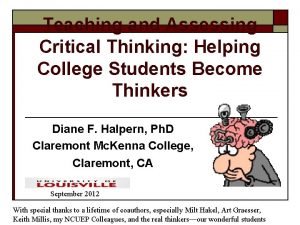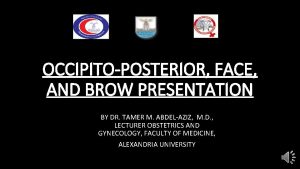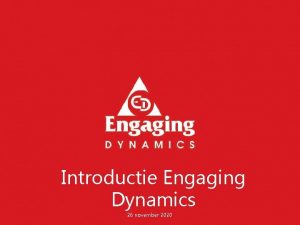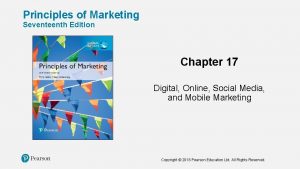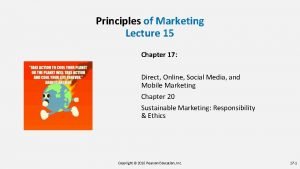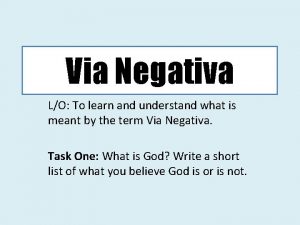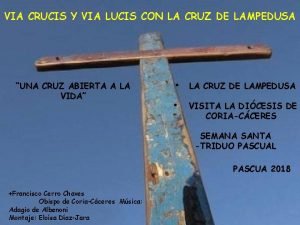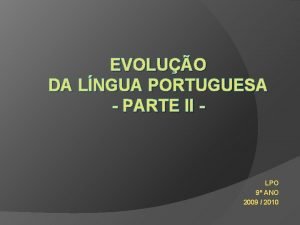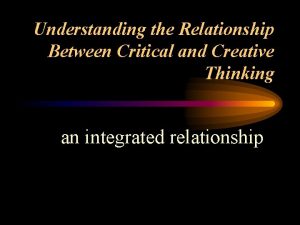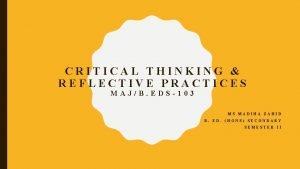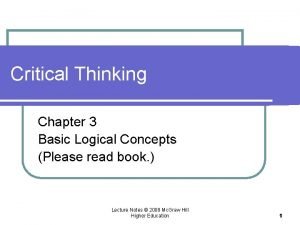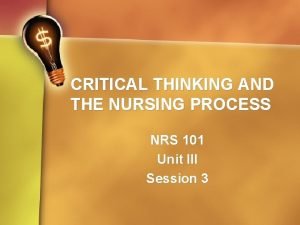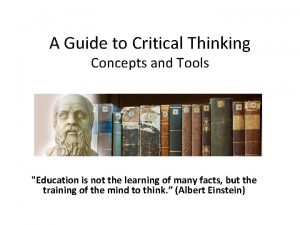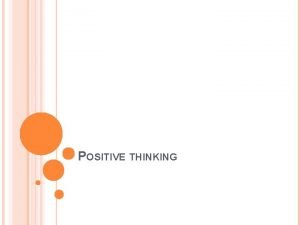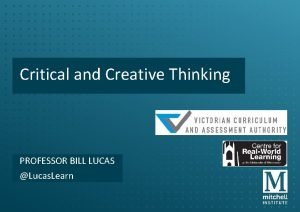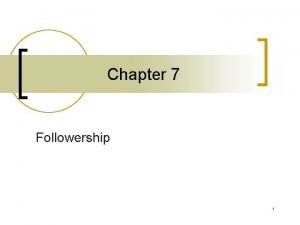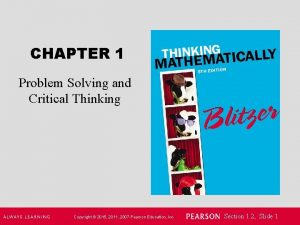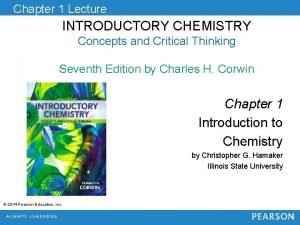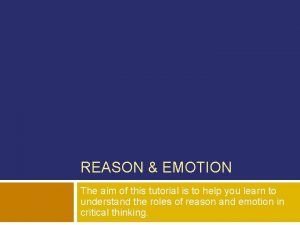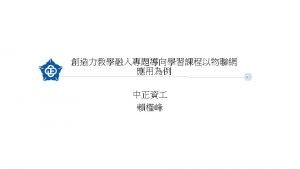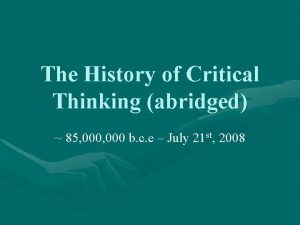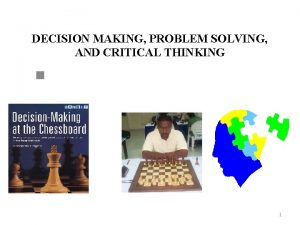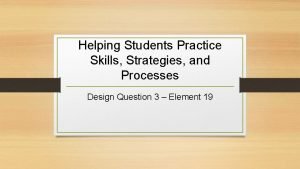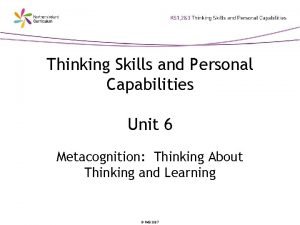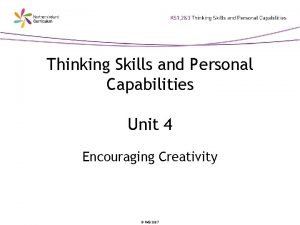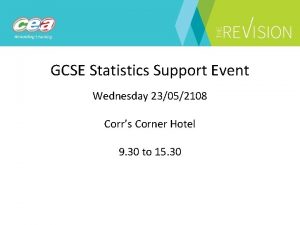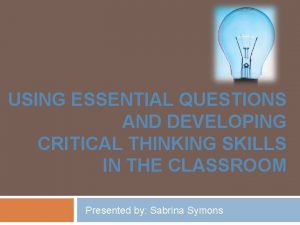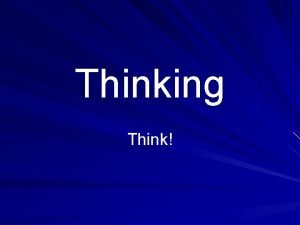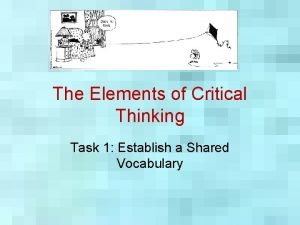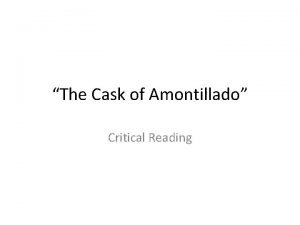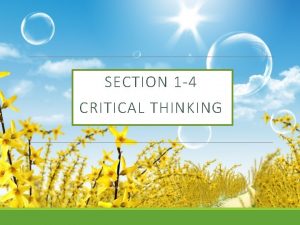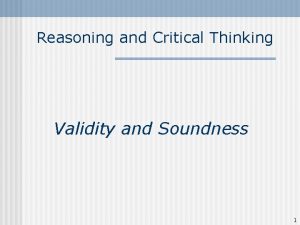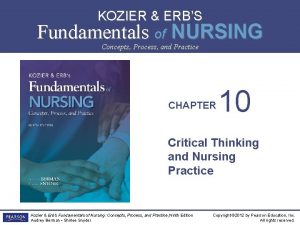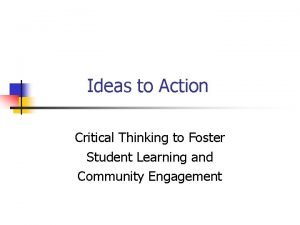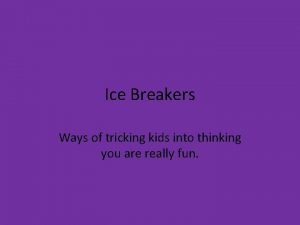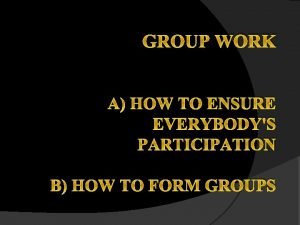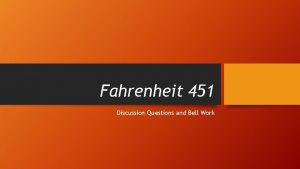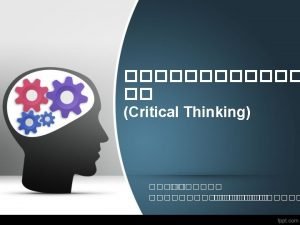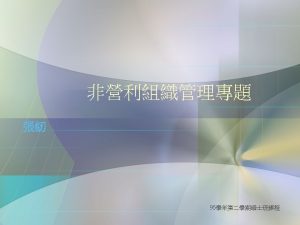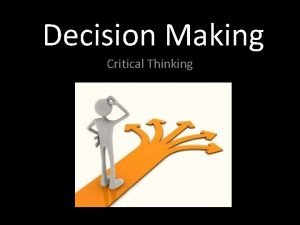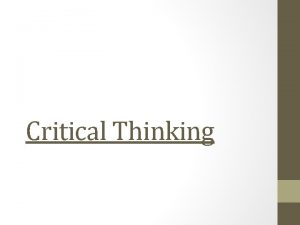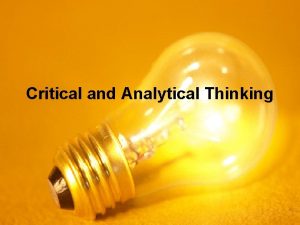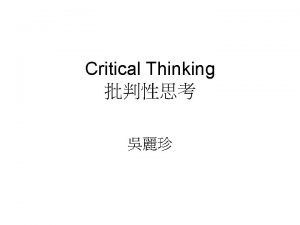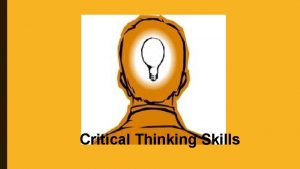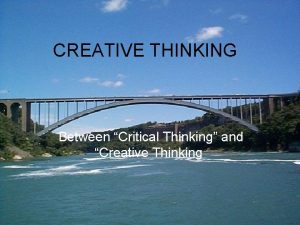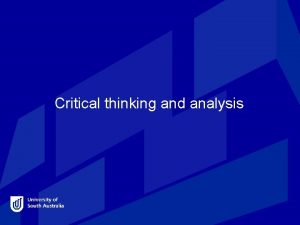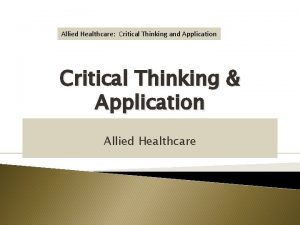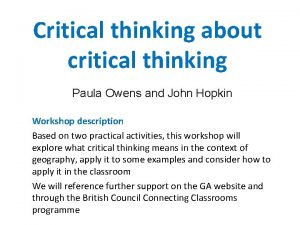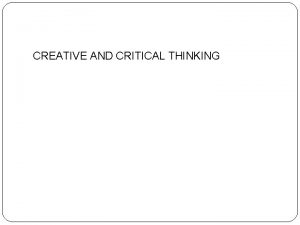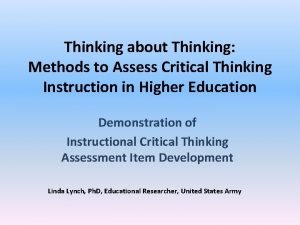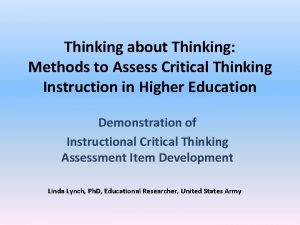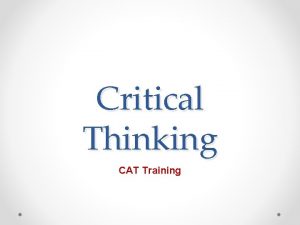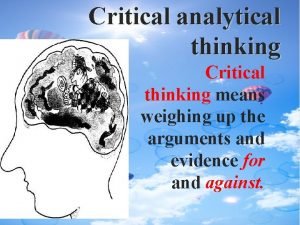ENGAGING STUDENTS AND ADDRESSING CRITICAL THINKING SKILLS VIA






















































- Slides: 54

ENGAGING STUDENTS AND ADDRESSING CRITICAL THINKING SKILLS VIA THE NUCLEAR DEBATE James D. Myers Director, Wyoming CCS Technology Institute Professor, Department of Geology & Geophysics University of Wyoming

A Quick Look at Nuclear Power Global Nuclear Power Industry 12/7/2020 QR-STEM 2

A Quick Look at Nuclear Power Global Nuclear Power Industry 12/7/2020 QR-STEM 3

A Quick Look at Nuclear Power Global Nuclear Power Industry 12/7/2020 QR-STEM 4

A Quick Look at Nuclear Power Global Nuclear Power Industry 12/7/2020 QR-STEM 5

A Quick Look at Nuclear Power Global Nuclear Power Industry 12/7/2020 QR-STEM 6

A Quick Look at Nuclear Power U. S. Nuclear Power Industry 12/7/2020 QR-STEM 7

A Quick Look at Nuclear Power U. S. Nuclear Power Industry o U. S. Nuclear Regulatory Commission has issued design certificates for: § Advanced Boiling Water Reactor (ABWR) § System 80+ § Advanced Passive 600 (AP 600) § Advanced Passive 1000 (AP 1000) o considering applications for 4 other designs o certifies plant design independent of specific site 12/7/2020 QR-STEM 8

Nuclear Power Important Topic Areas o o overview of nuclear power industry nuclear physics reactor principles fuel cycles § uranium (U)-plutonium (Pu) § thorium (Th)-uranium (U)-plutonium (Pu) o issues around nuclear power § § § waste disposal radiation accidents & safety proliferation terrorism reactor decommissioning o future directions 12/7/2020 QR-STEM 9

Nuclear Physics Nuclear Transformations: Mechanisms o the nuclear structure of atoms is changed by three different mechanisms: § fission: splitting of heavy nuclei into two lighter ones with the releases of neutrons and energy • • spontaneous: naturally-occurring, long half-life (for U 108 -9 y) neutron-induced § fusion: combining of two nuclei to make a new heavier nuclei • new nuclei has less mass than sum of two original nuclei § radioactive decay: spontaneous disintegration of a nucleus into a smaller, less energetic nucleus by emission of particle or electromagnetic radiation • • particle: alpha, beta, electron capture electromagnetic: gamma o these processes are not influenced by physical conditions, e. g. pressure, temperature, etc. 12/7/2020 QR-STEM 10

Nuclear Physics Nuclear Transformations: Binding Curve 12/7/2020 QR-STEM 11

Nuclear Physics Nuclide Chart: Periodic Table? 12/7/2020 QR-STEM 12

Nuclear Physics Nuclide Chart: Systematics 12/7/2020 QR-STEM 13

Nuclear Physics Nuclide Chart: Stable Isotope Band 12/7/2020 QR-STEM 14

Nuclear Physics Nuclide Chart: Stability Regions & Decay Mechanisms 12/7/2020 QR-STEM 15

Nuclear Physics Fission: Fundamental Forces 12/7/2020 QR-STEM 16

Nuclear Physics Fission: Balancing Nuclear Forces 12/7/2020 QR-STEM 17

Nuclear Physics Fission: Neutron Capture o neutron induced fission starts with neutron capture 12/7/2020 QR-STEM 18

Nuclear Physics Fission: Liquid Drop Model 12/7/2020 QR-STEM 19

Nuclear Physics Fission: Product Yield 12/7/2020 QR-STEM 20

Nuclear Physics Fission: Products too many neutrons 12/7/2020 QR-STEM 21

Nuclear Physics Fission: Fissile vs. Fertile Isotopes o fissile: isotopes that can sustain a chain reaction through fissions induced by thermal neutrons § 235 U: • § § 12/7/2020 naturally-occurring 0. 7 % of natural U o fertile: isotope that can be converted to fissile isotope by neutron capture of a thermal neutron § 232 Th § 238 U 233 U: not naturally-occurring 239 Pu: not naturally-occurring QR-STEM 22

Nuclear Physics Fission: Reactions o two primary fission reactions occurring in a light water reactor are: 12/7/2020 QR-STEM 23

Nuclear Physics Chain Reaction 12/7/2020 QR-STEM 24

Reactor Design Thermal Electricity Generation 12/7/2020 QR-STEM 25

Reactor Design Component Systems o all reactors are characterized by fairly standard group of systems or components: § moderator: slows fast neutrons to slow (thermal) neutrons (more § § § 12/7/2020 efficient at fissioning 235 U) coolant: liquid/gas circulated through reactor core to remove the heat control rods: neutron-absorbing cylinders to control chain reaction pressure vessels/tubes: steel vessel encapsulating reactor core, coolant or moderator steam generator: heat exchanger where the coolant heats water to steam and drives turbine contaminant system: reactor core housing to contain radioactive material in event of accident fuel: pellets of enriched or natural uranium or uranium /plutonium mix QR-STEM 26

Reactor Design Commercial GEN II Reactors pressurized water reactor boiling water reactor CANDU reactor 12/7/2020 RBMK reactor QR-STEM 27

Nuclear Fuel Cycles: U-Pu Purification o yellowcake is dissolved in nitric acid to produce uranyl nitrate (UO 2(NO 3)2) § reduced with hydrogen to UO 2 o purified UO 2 reacted with hydrofluoric acid to produce uranium tetrafluoride (UF 4) § oxidized with fluorine to yield uranium hexafluoride (UF 6) § at standard p and T, a solid gray crystals o nasty stuff § highly toxic, reacts violently with water, corrosive to metals 12/7/2020 QR-STEM 28

Nuclear Fuel Cycles: U-Pu Enrichment o because fissile 235 U is only 0. 7 % of natural U, for many reactor designs must be enriched § low-enriched uranium: < 20% 235 U • reactor grade: 3 -4 % § highly-enriched uranium: >20 % 235 U • weapons grade: >90 % o enrichment methods § gaseous diffusion § high-speed centrifuges § dynamic separation § laser enrichment 12/7/2020 QR-STEM 29

Nuclear Fuel Cycles: U-Pu Fuel Fabrication o enriched uranium converted to UO 2 o fabricated into fuel pellets, which must: o conduct heat o contain fission products o pellets assembled into fuel rods and rods combined to make fuel assemblies § exact configuration depends on reactor o all of these elements can be handled safely without shielding 12/7/2020 QR-STEM 30

Nuclear Fuel Cycles: U-Pu Irradiation o fuel pellet now contains: o fission products o transuranics (Z > 92) o unfissioned 235 U o 238 U (lots) o new uranium isotopes: 233 U o when come out of reactor, pellets are: o highly radioactive o very hot 12/7/2020 QR-STEM 31

Nuclear Fuel Cycles: U-Pu Storage Once Through 12/7/2020 QR-STEM 32

Nuclear Fuel Cycles: U-Pu Reprocessing UK reprocessing facility 12/7/2020 QR-STEM 33

Issues and Concerns Introduction o o o waste disposal accidents proliferation terrorism radiation decommissioning 12/7/2020 QR-STEM 34

Issues and Concerns Waste Disposal: Classes o there are four basic classes of radioactive waste § very low-level waste (VLLW): very low levels of radiation which are not harmful to the biosphere § low-level waste (LLW): low radioactive waste that does not require shielding during transport and can be buried at shallow depths § intermediate-level waste (ILW): material with higher radioactivity that requires shielding § high-level waste (HLW): waste that contains fission products and transuranics with high (often lethal) levels of radioactivity and heat that require shielding and cooling o all radioactive waste decays with time § ultimately transmuted to non-radioactive elements 12/7/2020 QR-STEM 35

Issues and Concerns Radiation o radiation is the movement of energy through space as waves or particles o two types: electromagnetic radiation, particle radiation o worry is ionizing radiation because can cause biological damage o electromagnetic radiation travels as waves o produced when energetically excited nuclei emit energy 12/7/2020 QR-STEM 36

Issues and Concerns Radiation: Ionizing o ionizing radiation is radiation (particle or electromagnetic) that is energetic enough to detach electrons from atoms or molecules § produces ions, i. e. charged particles o If energy not above threshold, no ionization § regardless of the amount of radiation 12/7/2020 QR-STEM 37

Issues and Concerns Radiation: Shielding 12/7/2020 QR-STEM 38

Issues and Concerns Accidents o three major commercial nuclear accidents: § Windscale, U. K. : 1952, fire at AGR, small release of radioactivity § Three Mile Island, U. S. : 1979, PWR, LOCA, 20% core meltdown, small release § Chernobyl, U. S. S. R. : 1986, RMBK, steam explosion, large release, 50 deaths o major consequence of nuclear reactor accident include potential release of: § radioactive material § radiation o lots of potential sources of failure § most serious is loss of coolant accident (LOCA) § can lead to meltdown 12/7/2020 QR-STEM 39

Issues and Concerns Accidents: LOCA o LOCA means no way to remove heat from reactor core o temperature can climb rapidly leading to a meltdown § melts cladding of fuel pellets and fuel rods § releases transuranics, fission products and fuel o lots of possible causes § cannot anticipate all possible and engineer protection o create redundant systems for defense in depth 12/7/2020 QR-STEM 40

Issues and Concerns Accidents: LOCA o engineered safety systems (ESS) have five major functions: § reactor trip (RT): rapid shutdown of reactor's chain reaction § emergency core cooling (ECC): flooding of the reactor vessel with cooling water from an independent supply § post-accident radiation removal (PARR): a system that removes and captures any radioactive material (liquid, gas, solid) contained by the containment building § post-accident heat removal (PAHR): removal of heat from core to return temperatures to safe levels § containment integrity (CI): a structure designed to contain any radioactive material 12/7/2020 QR-STEM 41

Issues and Concerns Accidents: Fault Tree Analysis/Probability Risk Assessment o safety analysis is a fault tree analysis and is depicted by an event tree o traces the path of possible failures from initiating event to final outcome o each branching junction of the tree depicts a binary outcome: § success (1); or § failure (2) o more the levels of redundancy, the greater the possible number of outcomes 12/7/2020 QR-STEM 42

Issues and Concerns Accidents: Fault Tree Analysis/Probability Risk Assessment o Rasmussen report (1975) o five event levels § RT § ECC § PARR § PAHR § CI o 32 possible outcomes § 1 - all systems successful § 32 – all systems fail o report is controversial and lead to PAR (probability risk assessment) 12/7/2020 QR-STEM 43

Issues and Concerns Accidents: Liability o size of any subsequent claim from nuclear accident would bankrupt any responsible party o Congress passed Price-Anderson Act in 1957 o limited operator responsible in the event of a nuclear accident thereby leaving the public at risk for huge uncompensated losses § initial bill limited operator liability to $60 million § additional $500 million from government § only a thirtieth of the potential losses o extended three times: 1965, 1975 and 1988 § operator liability is still at $60 million § nuclear industry has additional insurance up to $7 billion 12/7/2020 QR-STEM 44

Nuclear’s Future GIF o Generation IV International Forum (GIF) o 13 nations o collaboratively development of next generation of reactors and power and safety systems DOE, 2010 12/7/2020 QR-STEM 45

Nuclear’s Future GIF: Reactor Missions o three primary missions envisioned for Gen IV reactors: § electricity production: produce electricity by converting thermal energy from fission to kinetic energy to rotational to electrical energy § nonelectricity missions: • • • produce freshwater through desalination hydrogen production for energy process heat for a range of energy intensive industries § actinide management: • extend uranium supplies • reduce amount of nuclear waste 12/7/2020 QR-STEM 46

Teaching About Nuclear Power Goals and Methods o useful for: o pedagogical tool/approaches: § science and technology (STEM perspectives) § non-STEM perspectives (economic, political, social, etc. ) § context for teaching: • • § § quantitative reasoning; and scientific literacy § § involves affective domain • relevant & timely • important as citizen § § tied to energy-water-climate grand challenge nexus 12/7/2020 § reading questionnaires: lab & QR-STEM lecture activities: short, focused surveys: probe pre/mis/naïve conceptions & attitudes lab exercises: focused on key points, mostly single perspective, highly quantitative case studies: longer, multiple STEM/non-STEM perspectives, set in global context, 47

Teaching About Nuclear Power Lecture & Lab 12/7/2020 QR-STEM 48

Teaching About Nuclear Power Lecture Activities o worksheet students complete in class o available topics: § Exploring Fission and Fusion § Nuclide Chart, Radioactivity and Nuclear Reactions § Investigating Plutonium Production § The Alternative Thorium Fuel Cycle § Nuclear Waste Storage Times 12/7/2020 QR-STEM 49

Teaching About Nuclear Power Case Studies o 3 -week o geology, economics, social, political o Nuclear Energy: Power, Weapons & Iran § I. Designing a Uranium Mine § II. Choosing a Reactor Design & Fuel Cycles § III. Iran, the West and Nuclear Non-proliferation o Coal: China, Energy & Climate Change § Coal Power Plants – Maintain, Retrofit or Replace? 12/7/2020 QR-STEM 50

Teaching About Nuclear Power II. Choosing a Reactor Design & Fuel Cycles 12/7/2020 QR-STEM 51

Teaching About Nuclear Power II. Coal Power Plants – Maintain, Retrofit or Replace? 12/7/2020 QR-STEM 52

Teaching About Nuclear Power II. Coal Power Plants – Maintain, Retrofit or Replace? 12/7/2020 QR-STEM 53

Summary o supplies ~15 % of global electricity and 19 % of U. S. electricity o based on fission (splitting of heavy nuclei into two lighter nuclei with release of radiation) o nuclear fuel cycle produces the fuel for reactors and disposes of waste § milling and refining, purification, enrichment, fabrication, irradiation, storage, +reprocessing § two main variations: once through, reprocessing o issues and concerns include: waste disposal, accidents, proliferation, terrorism, radiation, reactor decommissioning o good teaching tool: relevance, QR, critical thinking, science, policy, politics § use in lecture and lab 12/7/2020 QR-STEM 54
 Critical semi critical and non critical instruments
Critical semi critical and non critical instruments Semi-critical
Semi-critical Flat addressing vs hierarchical addressing
Flat addressing vs hierarchical addressing Perbedaan critical thinking dan creative thinking
Perbedaan critical thinking dan creative thinking Rewrite
Rewrite Fundal level
Fundal level Dynamisch verbinden
Dynamisch verbinden Marketing involve engaging directly with carefully targeted
Marketing involve engaging directly with carefully targeted Marketing involve engaging directly with carefully targeted
Marketing involve engaging directly with carefully targeted Via positiva and via negativa
Via positiva and via negativa Decimoquinta estacion via crucis
Decimoquinta estacion via crucis Que es el vialusis
Que es el vialusis Mns piramidal
Mns piramidal Via erudita e via popular
Via erudita e via popular Relationship between creative and critical thinking
Relationship between creative and critical thinking Nursing process objectives
Nursing process objectives Critical thinking and reflective practices
Critical thinking and reflective practices Creative thinking
Creative thinking Common patterns of inductive reasoning
Common patterns of inductive reasoning 3 levels of critical thinking in nursing
3 levels of critical thinking in nursing Critical thinking concepts and tools
Critical thinking concepts and tools Critical thinking positive and negative
Critical thinking positive and negative Critical and creative thinking victorian curriculum
Critical and creative thinking victorian curriculum Bill lucas creativity wheel
Bill lucas creativity wheel Uncritical thinking
Uncritical thinking Chapter 1 problem solving and critical thinking
Chapter 1 problem solving and critical thinking Introductory chemistry concepts and critical thinking
Introductory chemistry concepts and critical thinking Emotions and critical thinking
Emotions and critical thinking An introduction to critical thinking and creativity
An introduction to critical thinking and creativity History of critical thinking
History of critical thinking Critical thinking problem solving and decision making
Critical thinking problem solving and decision making Helping students practice skills, strategies, and processes
Helping students practice skills, strategies, and processes Rizal champion of filipino students
Rizal champion of filipino students It for higher thinking skills and creativity
It for higher thinking skills and creativity Thinking skills and personal capabilities
Thinking skills and personal capabilities Icedip model with example
Icedip model with example Ccea thinking skills and personal capabilities
Ccea thinking skills and personal capabilities Slidetodoc.com
Slidetodoc.com Which is the hardest
Which is the hardest Critical thinking guidelines
Critical thinking guidelines Critical thinking examples
Critical thinking examples Critical thinking examples in everyday life
Critical thinking examples in everyday life Nosich elements of critical thinking
Nosich elements of critical thinking The cask of amontillado literary analysis answers
The cask of amontillado literary analysis answers Critical thinking examples
Critical thinking examples Critical thinking validity
Critical thinking validity Active learning strategies to promote critical thinking
Active learning strategies to promote critical thinking Nursing inferences examples
Nursing inferences examples 5 components of critical thinking
5 components of critical thinking Critical thinking icebreakers
Critical thinking icebreakers Critical thinking in group work
Critical thinking in group work Discussion questions fahrenheit 451
Discussion questions fahrenheit 451 Critical thinking definition
Critical thinking definition Foundation for critical thinking wikipedia
Foundation for critical thinking wikipedia Portable heating unit on the moon
Portable heating unit on the moon




